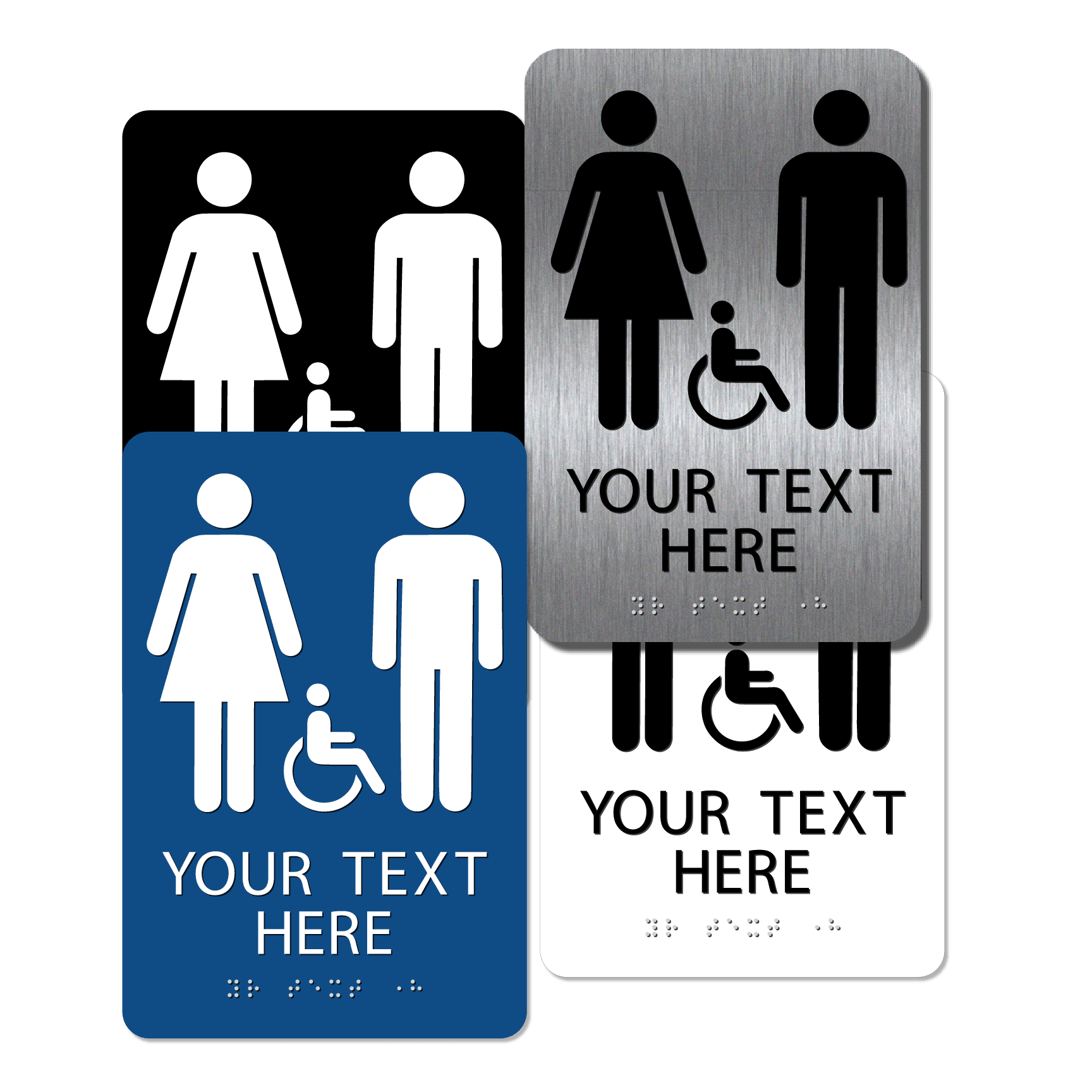Exactly How ADA Signs Improve Availability for Everyone
Exactly How ADA Signs Improve Availability for Everyone
Blog Article
ADA Signs: Guaranteeing Ease Of Access and Compliance in Public Spaces
ADA signage plays a crucial role in assuring access and compliance within public rooms, considerably contributing to an inclusive environment for individuals with disabilities. As we check out the subtleties of ADA signage, from tactile features to design complexities, it's crucial to consider how these elements integrate to maintain the legal rights of all users.
Significance of ADA Signage
In modern-day society, the value of ADA signs prolongs past simple compliance with legal requireds to embody a dedication to inclusivity and availability for all people. These signs are crucial in developing environments where people with impairments can navigate public spaces with the very same ease and self-reliance as those without specials needs. By offering standard and clear details, ADA signs makes certain that every person can access centers, solutions, and details without barriers.
The significance of ADA signs depends on its capability to enhance the high quality of life for people with impairments by promoting equal gain access to. It eliminates the obstacles that may otherwise impede their capacity to participate fully in area life. These signs offer as noticeable indications of a company's devotion to diversity and equal rights, reflecting broader societal values that champion the civil liberties and self-respect of all individuals.
Furthermore, ADA signs plays a vital function in public safety. By leading people to leaves, restrooms, and various other crucial facilities, it makes certain that all individuals, despite physical capacity, can leave securely throughout emergencies. In summary, ADA signage is not simply a regulatory demand but a powerful device for cultivating a inclusive and equitable culture.
Key Components of Conformity

Positioning is important; indicators should be set up in areas that are reachable and quickly visible. Typically, signs ought to be placed between 48 and 60 inches from the ground to guarantee access for both standing and wheelchair individuals. Responsive elements, such as Braille, are essential for people with aesthetic impairments, giving essential information in a non-visual layout.
High-contrast colors between the message and background are necessary to enhance readability for individuals with low vision. The ADA mandates certain contrast ratios to make certain quality. In addition, character dimension is a crucial consideration, with minimal height demands determined by the seeing range to make sure readability from various angles.
Layout Considerations for Availability
Designing available signage needs a meticulous strategy to guarantee it fulfills the needs of all customers, especially those with disabilities. The size of the message is equally crucial, with ADA standards suggesting a minimal height based on watching distance to make certain clarity.
Contrasting shades in between message and background are vital for presence, particularly for individuals with aesthetic problems. Additionally, tactile elements, such as Braille and raised characters, are important for individuals who are blind or have reduced vision.
Moreover, the placement of signs plays a substantial function in access. Indications ought to be installed in areas that are quickly obtainable and unblocked. Making sure that signage is mounted at suitable heights my website and angles allows all customers, including those utilizing wheelchairs, to communicate with them properly.
Common Mistakes to Prevent

Another widespread mistake is the inaccurate placement of signage. ADA standards specify specific height and location needs to make certain that indicators are reachable and easily visible by all individuals, including those utilizing wheelchairs. Overlooking these standards not only hampers availability but additionally risks non-compliance with legal requirements.
In addition, inadequate contrast in between message and history is a constant oversight. Ample comparison is necessary for readability, especially for people with low vision. Designers occasionally choose shades that are visually appealing however lack the required contrast, providing the message tough to recognize.
Finally, some designers fail to integrate responsive aspects, such as Braille, which are essential for individuals who are blind. Leaving out these attributes not only leads to non-compliance with ADA laws however likewise limits access for a sector of the population that relies on responsive info.
Future Trends in Signage
Improvements in innovation and boosting awareness of inclusivity are shaping the future trends in signage design. As culture becomes extra aware of varied requirements, the integration of wise technologies into signage is obtaining traction. Digital signs, as an example, is progressing this website to include real-time updates and interactive functions, which can be important in supplying dynamic info in public areas. These signs typically incorporate touch displays or gesture-based controls, allowing individuals to browse material tailored to their details needs.
Another emerging fad is the use of enhanced truth (AR) to boost customer experience. AR-enabled signs can overlay digital information onto the physical setting, supplying aesthetically impaired individuals with auditory or haptic comments. ADA Signs. This modern technology not just boosts access yet also develops an engaging experience for all customers
Sustainability is additionally a substantial variable influencing signage trends. Eco-friendly materials and energy-efficient illumination remedies are being focused on to line visit this site up with global environmental goals. Innovations in materials scientific research are leading to the advancement of more weather-resistant and sturdy signs.
Conclusion
ADA signage plays a crucial duty in guaranteeing ease of access and conformity within public rooms by incorporating responsive elements, high-contrast shades, and strategic placement. The adherence to ADA requirements not just helps with secure navigation for individuals with handicaps yet also indicates an organization's commitment to variety and inclusivity. By avoiding usual mistakes and accepting future patterns, public rooms can continue to advance these values, guaranteeing that the rights and dignity of all people are valued and maintained.
ADA signs plays an important duty in guaranteeing access and conformity within public rooms, substantially contributing to a comprehensive setting for individuals with disabilities. As we discover the subtleties of ADA signs, from tactile functions to make intricacies, it's essential to think about how these aspects integrate to support the legal rights of all customers.In modern-day society, the significance of ADA signage extends past mere conformity with legal mandates to personify a dedication to inclusivity and ease of access for all individuals. By providing clear and standardized information, ADA signs makes certain that everybody can access centers, services, and information without obstacles.
ADA signage plays an important duty in assuring ease of access and conformity within public areas by incorporating responsive elements, high-contrast shades, and calculated placement. (ADA Signs)
Report this page